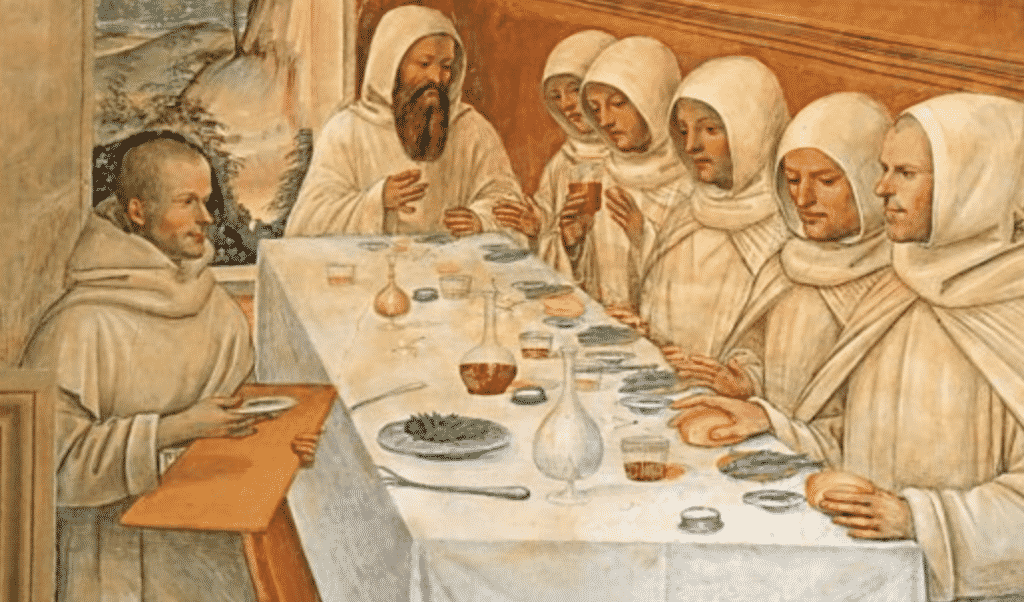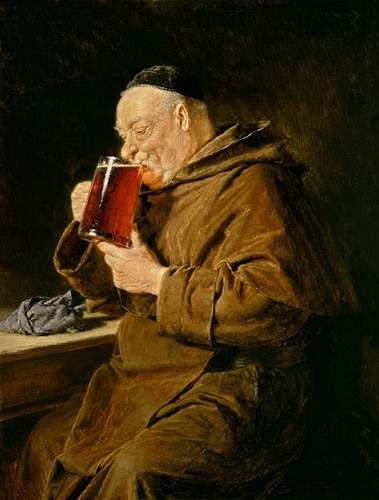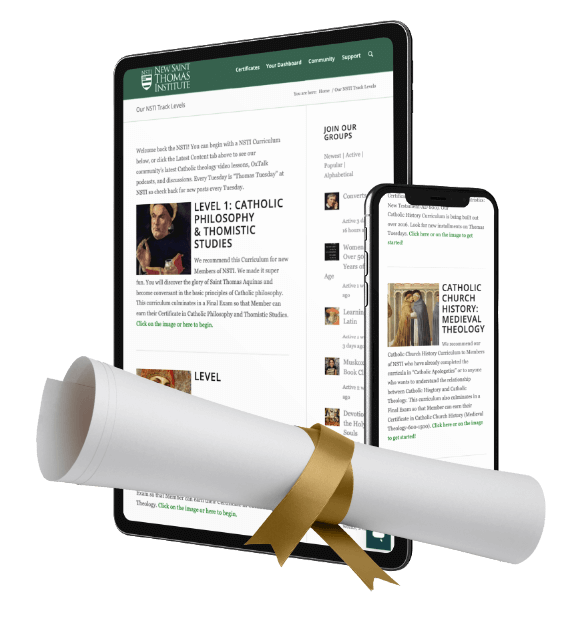Medieval Lent was Harder than Islamic Ramadan
I have been told that medieval Christians would ridicule the Islamic season of fasting called Ramadan as weak, effeminate, and easy when compared to the austere Christian season of fasting during Lent or Quadragesima.
The Catholic Church has decreased the austerity of Lent over the centuries so much that Islamic Ramadan now appears as more challenging than Lent. Let’s take a look at Ramadan compared to Medieval Lent.

Rules for Islamic Ramadan:
- Duration? 29-30 days during the entire month of during the entire month of Ramadan.
- Fasting rules? Fasting completely from the break of dawn until sunset:
- food (zero calories and no food intake)
- drink (including water)
- sexual intercourse
- smoking
Rules for Medieval Quadragesima or “Lent”:
Nota bene: I’m using the standards of the Roman Church. The Eastern Churches have had various disciplines by jurisdiction. For this article, we are focusing only on the Roman rules. Perhaps we’ll study the Eastern fasting rules in a future post.
- Duration? 46 days. 40 Days plus 6 Sundays in the Roman Church.
- Fasting rules? Medieval Lenten rules (as described Saint Thomas Aquinas) were as follows:
- Ash Wednesday and Good Friday were black fasts: no food at all.
- No food from waking until 3pm (the hour when Christ died). This practice of fasting till 3pm goes back to the 5th century (see Socrates’ Church History V.22).
- No animal meat or fats (no lard).
- Fish was allowed. Click here to understand the theology of why fish was is allowed, but not meat.
- No eggs.
 No lacticinia or “dairy products”: milk, cheese, cream, and butter. However, Catholics of the British Isles before the arrival of Saint Augustine of Canterbury were still consuming dairy products and perhaps eggs during Lent. Roman influence brought this to an end.
No lacticinia or “dairy products”: milk, cheese, cream, and butter. However, Catholics of the British Isles before the arrival of Saint Augustine of Canterbury were still consuming dairy products and perhaps eggs during Lent. Roman influence brought this to an end.- Wine and beer were allowed.
- Medieval Europeans during Lent subsisted on bread, vegetables, and salt.
- No sexual intercourse between spouses. Pagan kings were pretty pissed to learn about this after they married hot Catholic princesses.
- No Sundays off. All these rules apply for 46 days. The 6 Sundays in Lent were relaxed liturgically (less penitential), but the fasting and abstinence were not relaxed on Sundays.
- For the Good Friday black fast, many would begin fast from Maundy Thursday night till about noon on Saturday. The Easter Vigil was usually celebrated about noon on Saturday and this ended the Lenten fasting officially.
- Was it Changed?
- Breaking the no food fast before 3pm began to creep in as early as AD 800. The reason we English speakers call 12pm “noon” is because the liturgical recitation of nones (“ninth hour” or 3pm in Latin) was moved up by hungry monks more and more until nones (3pm) was celebrated as early as 12pm so that they could break fast and eat lunch!)
- In Germany, dispensations were given for consuming lacticinia or dairy products based on payment or performing good deeds. In honesty, wealthy people simply paid a fee to the diocese, and were allowed to serve and eat dairy in their homes during Lent. It was a popular “fundraising technique” by (German!) bishops.
- Dinner snacks were allowed at the time of reading Cassians book Collationes and so this snack became known as a “collation” – the term we still use today for a snack during fasting.
- With the advent of tea and coffee, it became allowable to have tea or coffee in the morning and this was considered as not violating the fast before nones.
- Over time, papal indults allowed meat on Sundays and then to other days of the week until only Friday remained “meatless.”
- Pope Paul VI’s 1966 Apostolic Constitution of Paenitemini changed Lenten practice to what it is today:
- No meat (only fish) allowed on Fridays in Lent.
- 1 meal and 2 collations (snacks) allowed on Ash Wednesday and Good Friday.
Ramadan vs Medieval Lent:
- Both have no food at all until 3pm (Catholic) or sundown (Muslim).
- Both have no sex allowed at all, but the Muslim is allowed at night.
- Only the Catholic is restricted on kinds of food (no meat, dairy, eggs), whereas the Muslim can eat steak every night.
- Muslims may not drink even water during the daylight, but Christians may.
Conclusion: Medieval Christians were Tough
For the Medieval Christian, he would have seen the chief difference between Lent and Ramadan as the Muslims having a “reset” every single night with refreshment with food and sex every 24 hours. Whereas the Christian had to wait until Easter. The Muslim had daily sprints. The Medieval Christian had a marathon that ended on Easter.
[reminder]So could you do it? No sex, butter, or bacon for 46 days? No food daily till 3pm? Leave a comment and tell me what you think about this old Lenten rules. Is it good or bad that changed them?[reminder]
Please share this post with your friends on Facebook by clicking here.
Godspeed,
Dr Taylor Marshall
Don’t miss my Catholic Webinar on Mohammad and Islam (and the Crusades):
YOU WILL DISCOVER:
- the real story behind Muhammad and the Quran
- how Muhammad’s wife had heretical Christian connections
- how Islam spread by the sword
- the defensive reason for the Catholic Crusades
- how “the Crusades” are used by liberals to malign Christianity
- PLUS: Book recommendations
- EVERYONE THAT ATTENDS WILL RECEIVE A pdf Handout on Muhammad. Please register below.
You can sign up to attend by clicking here.
What to Watch Next
SHOP THE TAYLOR MARSHALL STORE
Dive Deeper

GET CONFIDENT IN YOUR FAITH
Explore the fascinating world of Catholic teachings with Dr. Marshall. Together you’ll unpack the brilliant answers the Church gives to tough questions about the Faith. The best part: you go at your own pace. Start this exciting journey today.


 >
>


